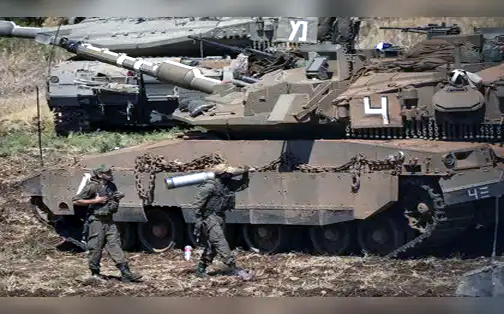By Manashimaya

June 2025
The Middle East has once again become the epicenter of escalating hostilities. In a dramatic show of force, Iran unleashed waves of missile and drone attacks on Israel in retaliation for Israel’s Operation Rising Lion — a calculated assault on Iranian nuclear and military infrastructure.
This confrontation has laid bare Iran’s vast and evolving weapons capabilities while testing the limits of Israel’s acclaimed air defense systems.
Tehran’s Arsenal: A Deeper Look at Iran’s Missile Might
Iran has long maintained a formidable missile program, believed to be the most expansive in the Middle East. Prior to the Israeli strikes, U.S. intelligence agencies estimated that Iran possessed over 3,000 ballistic missiles, including types like the Emad, Ghadr-1, and the hypersonic Fattah-1.
More recently, Iran showcased Kheibar Shekan missiles equipped with satellite navigation and enhanced maneuverability, as well as the newly unveiled Qassem Basir, reportedly engineered to evade modern missile defense systems like the U.S.-made Patriot.
These missiles are not only fast but also increasingly accurate, capable of reaching Israel from over 1,000 kilometers away.
Air Defense vs. Ballistic Missiles: Why the Conflict Is Harder Than It Seems
Ballistic missiles descend quickly and steeply, making them more difficult to intercept than drones. After being launched, they arc high into the sky before crashing at supersonic speeds toward their objectives.
According to Professor Stephan Fruehling of ANU’s Strategic and Defence Studies Centre, “the warhead can still fall and detonate even if intercepted mid-air.”
Because of this, even extremely sophisticated defense systems like David’s Sling, Israel’s Iron Dome, Arrow 2/3, and Patriot batteries are susceptible to intense bombardment.
Israel’s Counterstrike and the Bunker Problem
Israel’s Operation Rising Lion has targeted Iranian nuclear facilities like Natanz, key missile bases, and senior leadership within Iran’s military and nuclear establishments. These attacks have been tactically precise but may fall short of crippling Iran’s deeply buried sites such as Fordo, which require massive bunker-busting munitions.
Defense analysts suggest Israel lacks the kind of high-yield bombs needed to destroy underground complexes — something only the U.S. currently possesses.
Iran Under Pressure: A Struggle to Sustain Momentum
Though Iran managed to launch close to 200 ballistic missiles, sources from within the Islamic Revolutionary Guard Corps (IRGC) revealed their original plan involved firing over 1,000. However, Israeli airstrikes on missile storage and deployment sites forced Iran to scale back.
Tehran has relied heavily on Shahed drones to supplement its offensive and attempt to overwhelm Israeli interceptors. Yet, most missiles were intercepted — only a few penetrated Israeli defenses, striking central Tel Aviv and other northern cities, resulting in 13 deaths and hundreds of injuries
A Long Conflict Ahead? Experts Say It’s Possible
Security experts warn that the ongoing confrontation may evolve into a sustained low-level war. Iran has lost critical personnel and strategic sites, while Israel continues to press forward with surgical precision.
“Iran’s ability to defend or retaliate is weakening,” notes military analyst Michael Shoebridge. “Meanwhile, Israel’s intelligence superiority and offensive momentum could shift the conflict’s trajectory.”
Professor Fruehling adds that unless a major shift occurs — possibly even a change in Iran’s regime — the cycle of strikes and counterstrikes could continue for the foreseeable future.
Conclusion
The battle between Iran and Israel is no longer just a war of weapons. It’s a test of endurance, intelligence, and strategy — with ripple effects likely to impact global security and diplomacy.
